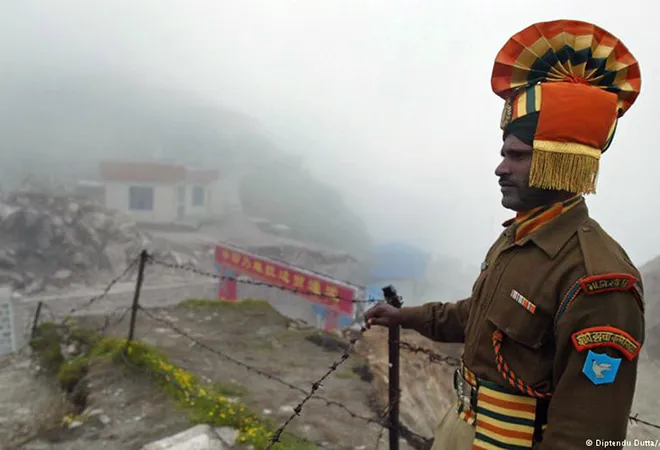-
CENTRES
Progammes & Centres
Location
India and China are mired in their longest border confrontation since the war of 1962.

Even as Prime Minister Narendra Modi was hugging Donald Trump in Washington last week, a tense standoff between India and China was under way in the Himalayas. Units of the two countries' armies have been maneuvering at the trijunction between India, China and Bhutan since 16 June — the longest border confrontation between the two nations since the Sino-Indian war of 1962.
It all started when a People's Liberation Army unit tried to build a road toward a Royal Bhutanese army camp on the Doklam Plateau. The Bhutanese protested and were supported two days later by an Indian army request that China cease its efforts. This led to a physical altercation between the two sides, with the Chinese soldiers probably destroying a few temporary Indian-army bunkers.
Unlike in the past, China has taken an unusually aggressive tone in its protests, portraying itself as a victim of Indian aggression. It upped the ante by asking India to recall the 1962 war and learn a lesson, to which New Delhi responded that "India of 2017 is different from India of 1962."
Expressing deep concern over China's construction of a road in the disputed area, New Delhi conveyed to Beijing that such an action would represent a significant change of status quo with "serious" security implications for India. For its part, Bhutan issued a démarche asking Beijing to return to the status quo ante.
Bhutan shares a unique relationship with India, which is largely responsible for its military security. As per the 2007 India-Bhutan Friendship Treaty, the two nations cooperate "closely with each other on issues relating to their national interests. Neither Government shall allow the use of its territory for activities harmful to the national security and interest of the other."
It's important for India to stand up for one of its closest allies. For China it's about challenging India's primacy in South Asia and sending a message to the smaller countries of the region that it retains the capability to shape South Asia's strategic environment decisively. Chinese construction of roads at Doklam has the larger military purpose of getting nearer to the Siliguri corridor so as to be able to cut off India's entire northeastern region should the need arise.
Rather than underlining its rising power, China's bullying behaviour underscores how rattled it is by Mr. Modi's proactive assertion of Indian interests. India was one of the few major powers not to attend May's Belt and Road Initiative Summit, repeatedly underscoring the hegemonistic design behind the plan's seemingly benign rhetoric. Growing bonhomie between Mr. Modi and Mr. Trump is also an unnerving factor for an insecure China.
After all, tiny Bhutan has done nothing to challenge China's growing pre-eminence. Its only fault is that it has close ties with India. The Modi government's policy of standing up to China and of working with like-minded countries in the region is the only way New Delhi can preserve its interests at a time when China's rise is upending a number of assumptions of global politics.
Washington must respond to the rapidly changing power dynamic in the Asia Pacific. By signaling that it is ready for a transactional relationship with Beijing in its initial months, the Trump administration may have inadvertently given China a green light to bully its neighbours. As Washington reviews its stance on China, it needs to be aware that Asia is being shaped by China's rise much faster than many anticipated even a few years back. A tense standoff between India and China could soon become the new normal if present trends continue.
This commentary originally appeared in The Wall Street Journal.The views expressed above belong to the author(s). ORF research and analyses now available on Telegram! Click here to access our curated content — blogs, longforms and interviews.

Professor Harsh V. Pant is Vice President – Studies and Foreign Policy at Observer Research Foundation, New Delhi. He is a Professor of International Relations ...
Read More +